Egyptian Garden Ideas: Transform Your Backyard into an Oasis
Imagine transforming your garden into a lush, timeless retreat inspired by the elegance and tranquility of ancient Egypt. Egyptian gardens blend the beauty of nature with the ingenuity of human design, creating spaces that are both practical and serene. What elements can you incorporate to evoke the charm and sophistication of Egyptian garden design?
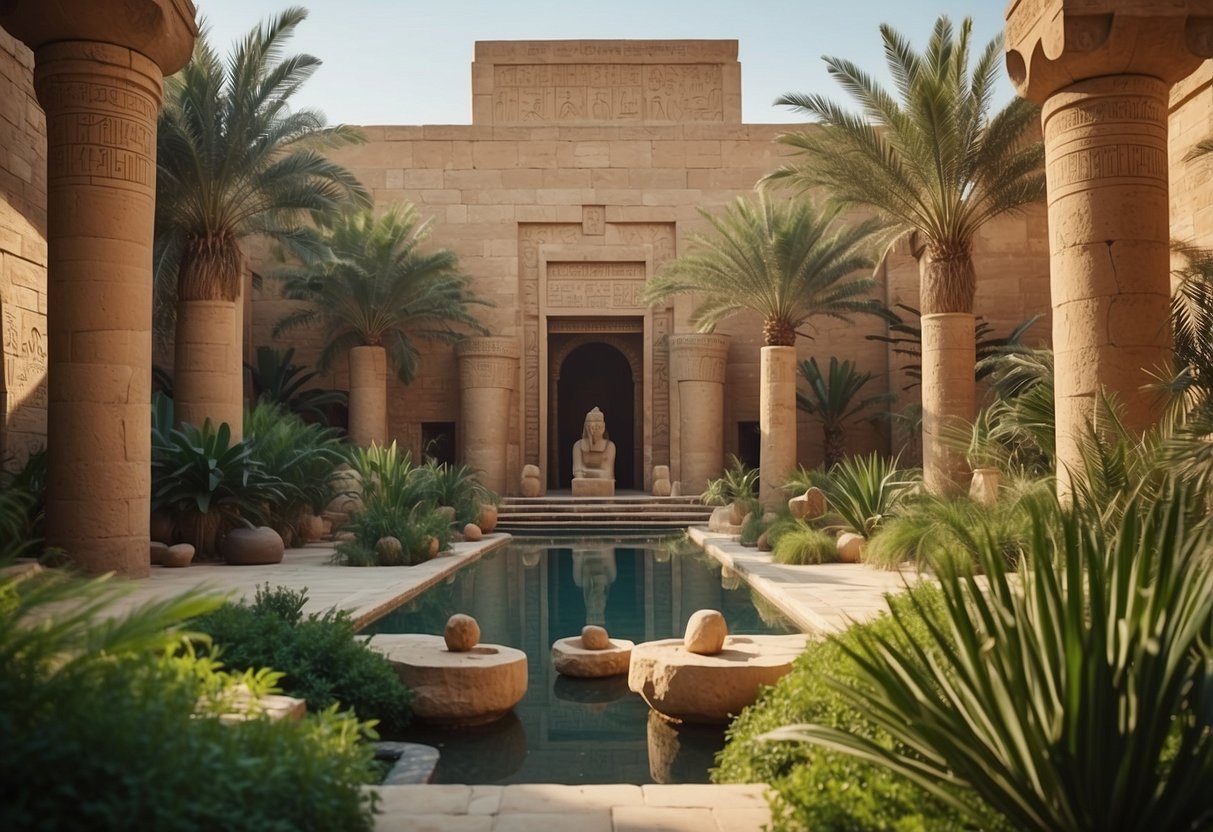
By evoking the spirit of ancient gardens, you can create a haven that not only looks beautiful but also offers a peaceful escape from daily life. Whether you have a large yard or a small balcony, there are ways to bring a touch of Egypt to your outdoor space.
1) Papyrus Plants
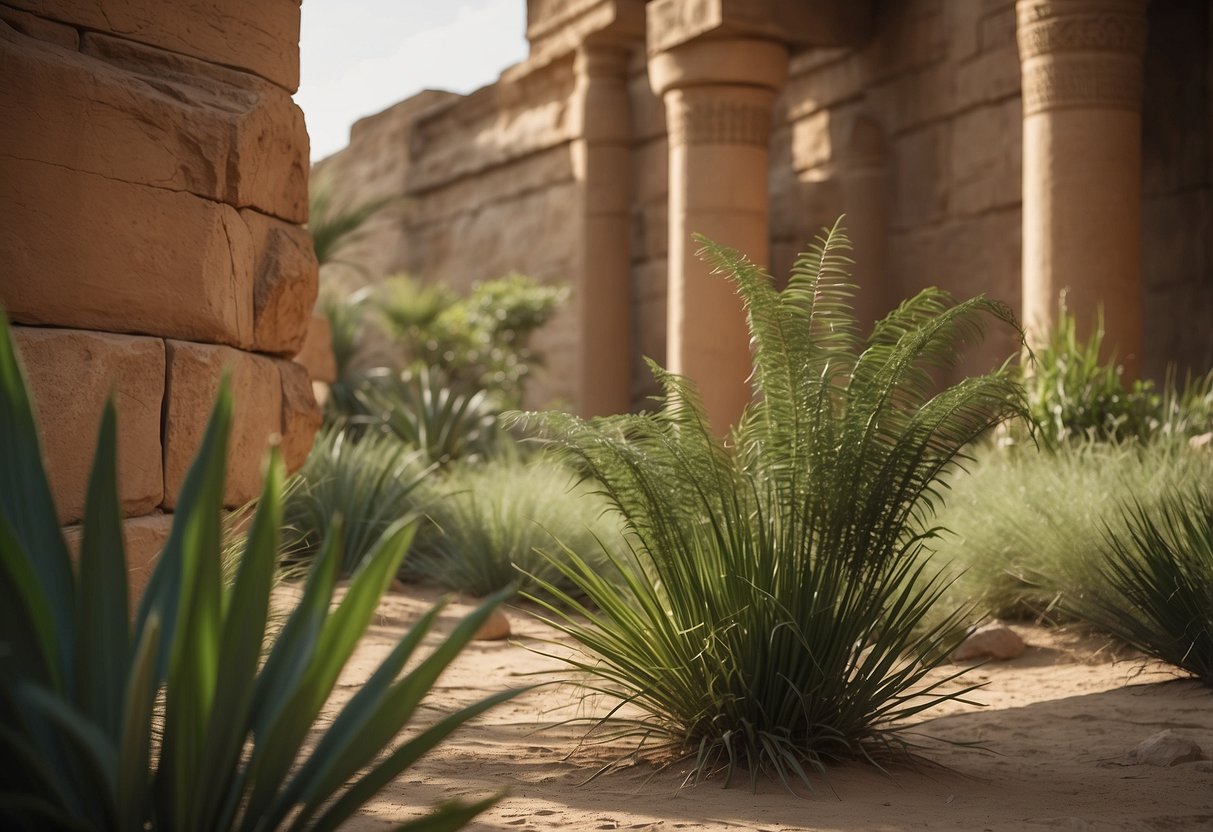
Papyrus plants are a fantastic addition to an Egyptian-themed garden. These tall, reed-like plants can grow as high as 16 feet. They thrive in full sun but can tolerate partial shade, making them ideal for different light conditions.
Papyrus prefers consistently moist, fertile soil. You can plant it near a water feature or keep the soil damp. In cooler climates, bring potted papyrus indoors during winter to protect it from frost. Papyrus adds an exotic touch and pairs beautifully with aquatic plants like lotus or water lilies. Learn more about their care at The Spruce.
2) Lotus Flowers

Adding lotus flowers to your garden can create a serene and beautiful atmosphere. They are known for their stunning blooms and lush green leaves. To grow them, you’ll need a water garden or a large container.
Start by filling the container with nutrient-rich soil and placing the lotus tuber horizontally. The growing points should face slightly upwards.
These plants require full sun and warm temperatures to thrive. Enjoy the peaceful beauty they bring to your garden. For more detailed instructions, visit How to Grow and Cultivate Egyptian Blue Lotus.
3) Palm Trees
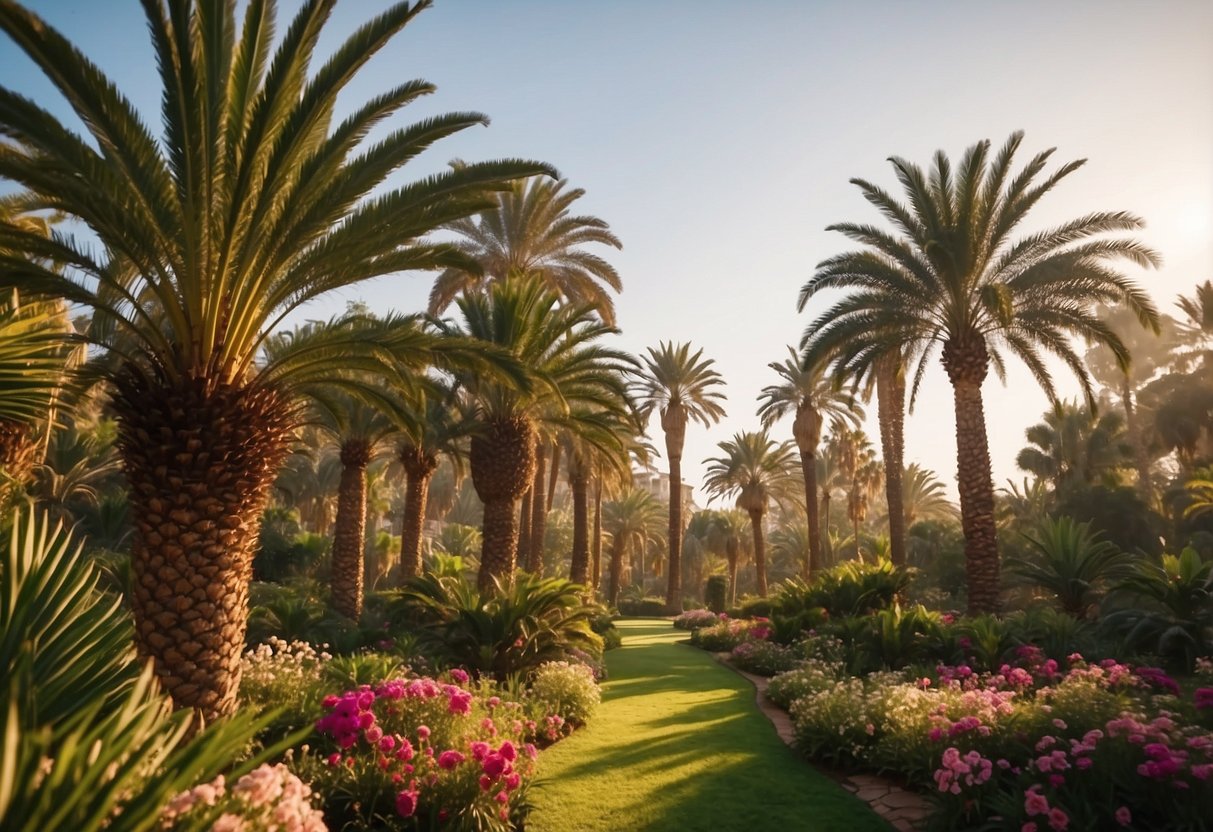
Incorporating palm trees into an Egyptian garden theme can add a touch of the exotic. You can group them together around one root zone for a striking effect. This is a great way to make them stand out.
For a more dramatic impact, try planting Queen Palms a few feet apart. They are known for their graceful fronds and can add both height and shade to your garden.
4) Walkway with Pebbles
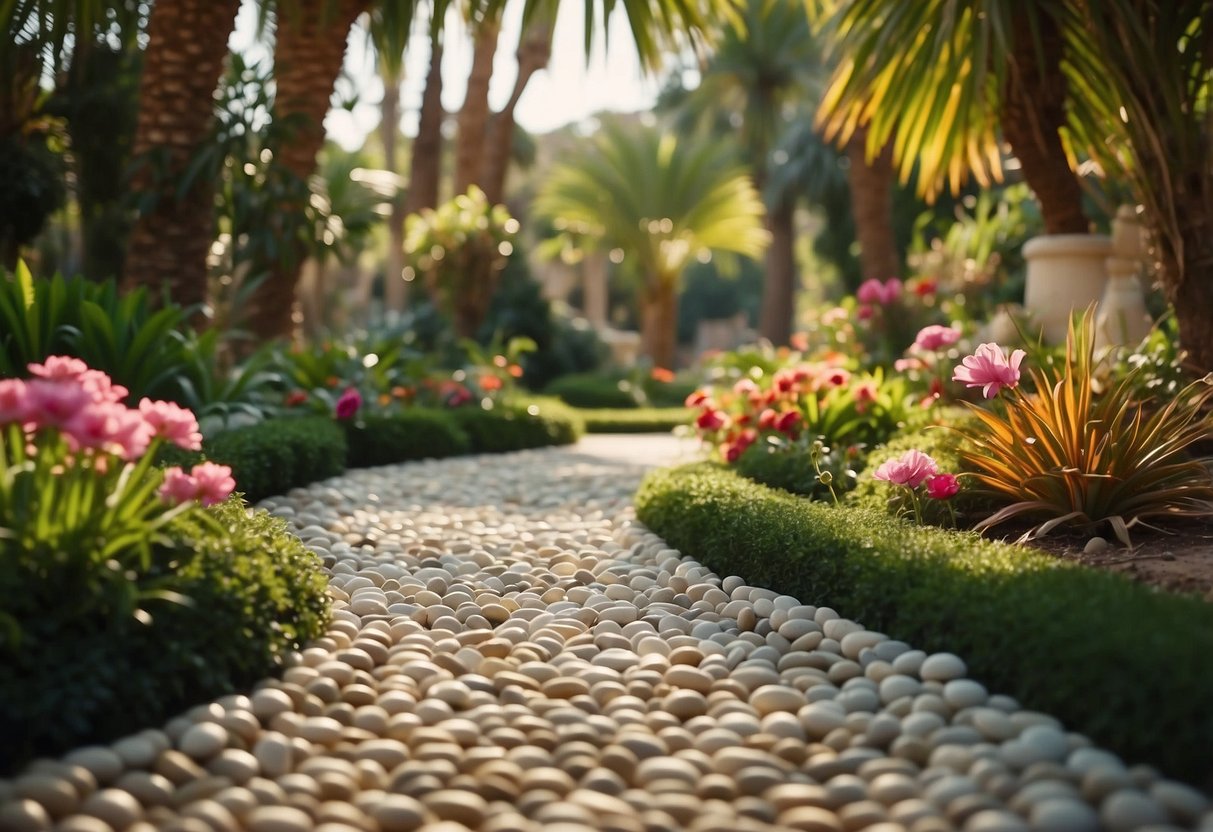
Creating a walkway with pebbles in your Egyptian garden adds a rustic charm. Pebbles are a versatile material that can be arranged in various patterns.
You can use a combination of different colored pebbles to create a mosaic effect. To keep the pebbles in place, consider using edging materials like brick or stone.
This type of walkway is not only attractive but also easy to maintain. Pebbles allow water to drain efficiently, which is especially useful in garden areas that might get wet frequently. A pebble walkway can elegantly lead you through your serene garden space.
5) Carved Stone Benches

Carved stone benches can add a touch of elegance to your Egyptian garden. These benches often feature intricate designs and patterns that reflect ancient Egyptian art.
Using materials like granite or limestone, these benches are durable and weather-resistant.
You can place them near pathways or under shaded areas to create a serene seating spot. For more ideas, check out this collection of stone garden benches.
6) Terracotta Pots
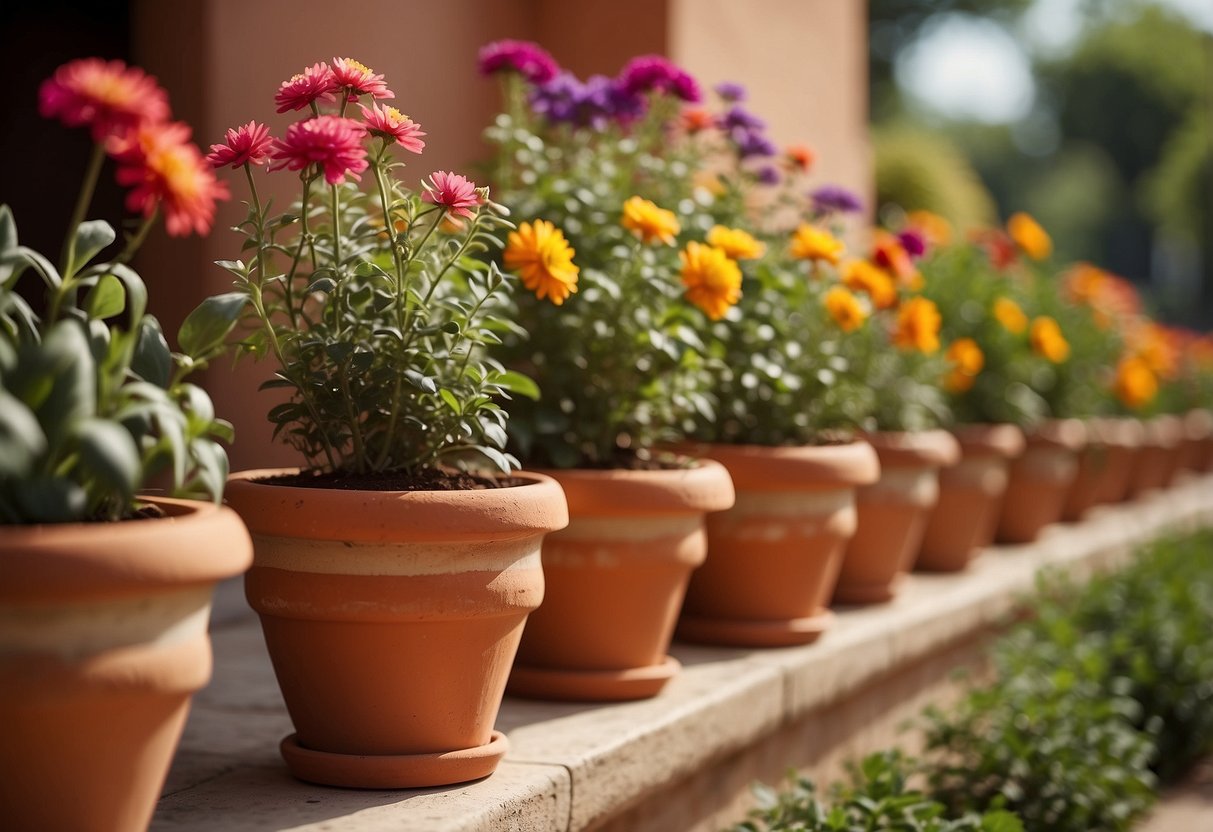
Terracotta pots can add a rustic touch to your Egyptian-themed garden. These clay pots have been used for centuries and are perfect for various plantings.
For a unique project, consider making a terracotta fountain. It’s a creative way to reuse planters and add a soothing water feature to your garden. Learn how to make one at Instructables.
You could also paint terracotta pots to mimic the look of Egyptian artifacts. Simple designs with gold and blue accents can instantly bring an ancient vibe to your outdoor space.
7) Reed Fences
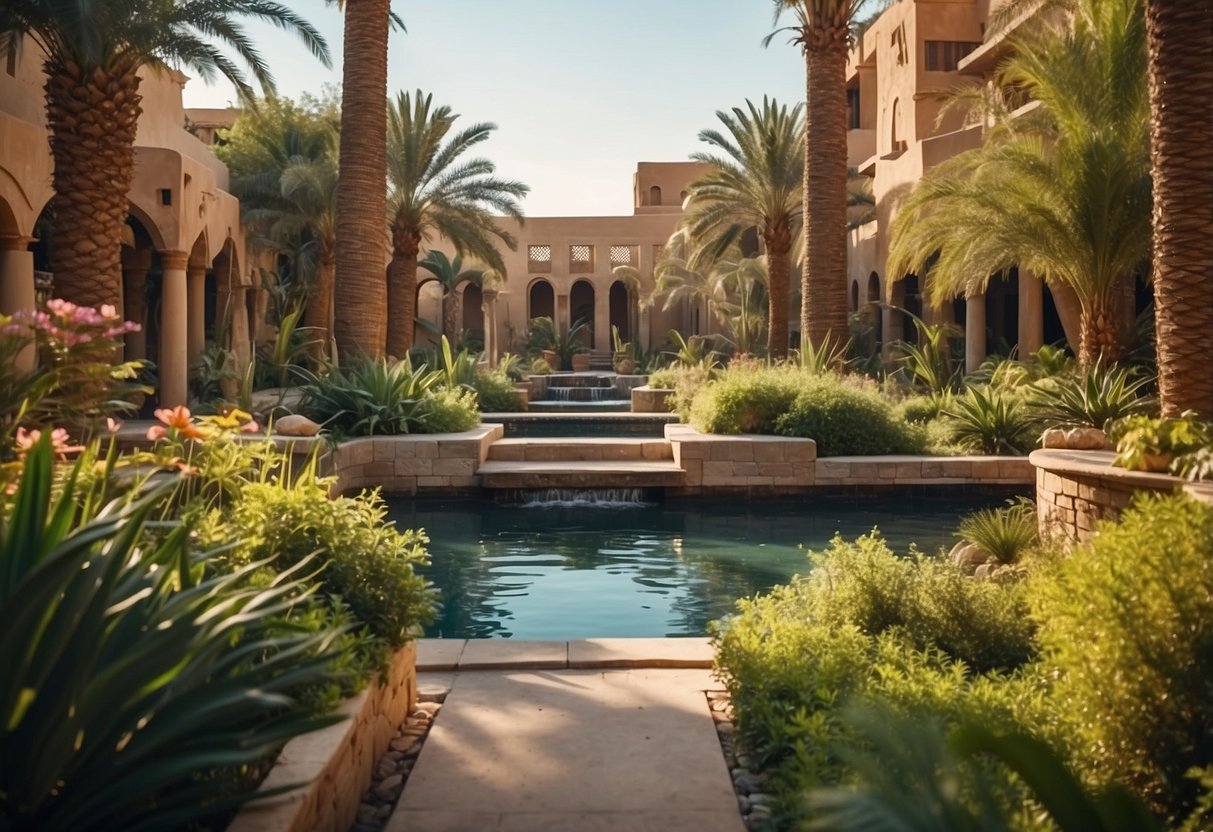
Reed fences are a great option for your Egyptian garden. They are made from woven freshwater reeds and can add a natural look to your space.
These fences often come in rolls, making them easy to install. You can cut them to the desired length to fit your garden’s layout.
Reed fences can also offer some privacy while blending well with the natural surroundings. For more details about reed fencing, you can explore different ideas at Balcony Boss and DoItYourself.com.
8) Sun Dial

Adding a sundial to your Egyptian garden brings a touch of ancient science and history right into your backyard.
A sundial is easy to make. Use a straight stick, like a dowel or a pencil, placed upright in the ground.
To tell the time, mark the hours with pebbles or small stones.
With your sundial, you’ll have a functional and decorative piece that connects you to the sun, just like in ancient Egypt.
9) Ancient Style Statues
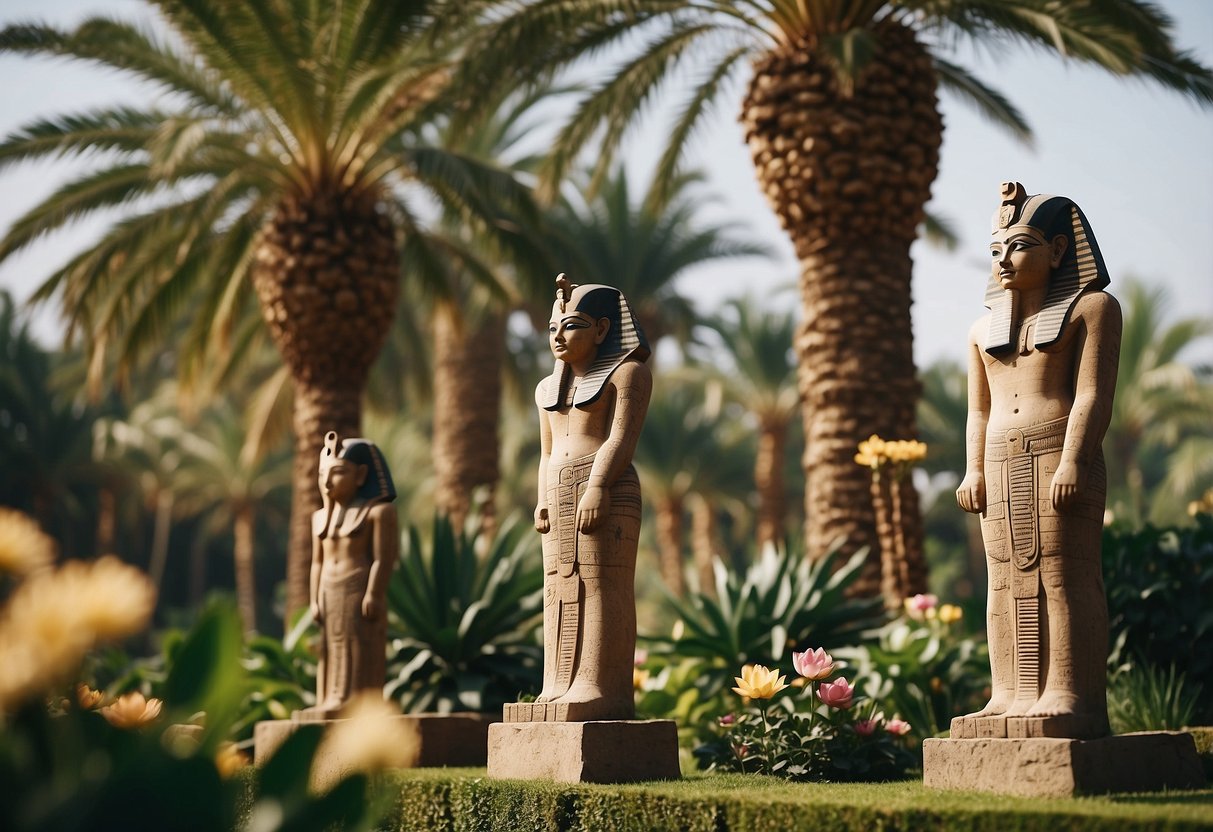
Adding ancient style statues to your garden can bring a touch of history and mystery. Statues of gods and pharaohs are common choices. These statues convey a sense of power.
Look for statues with intricate details and textures. They can be placed near water features or among plants. This creates a focal point.
Select statues made from stone or materials that resemble those used in ancient Egypt for a more authentic look. You can find these statues in garden stores or online. Adding these elements can make your garden feel timeless and grand.
10) Mosaic Pathways
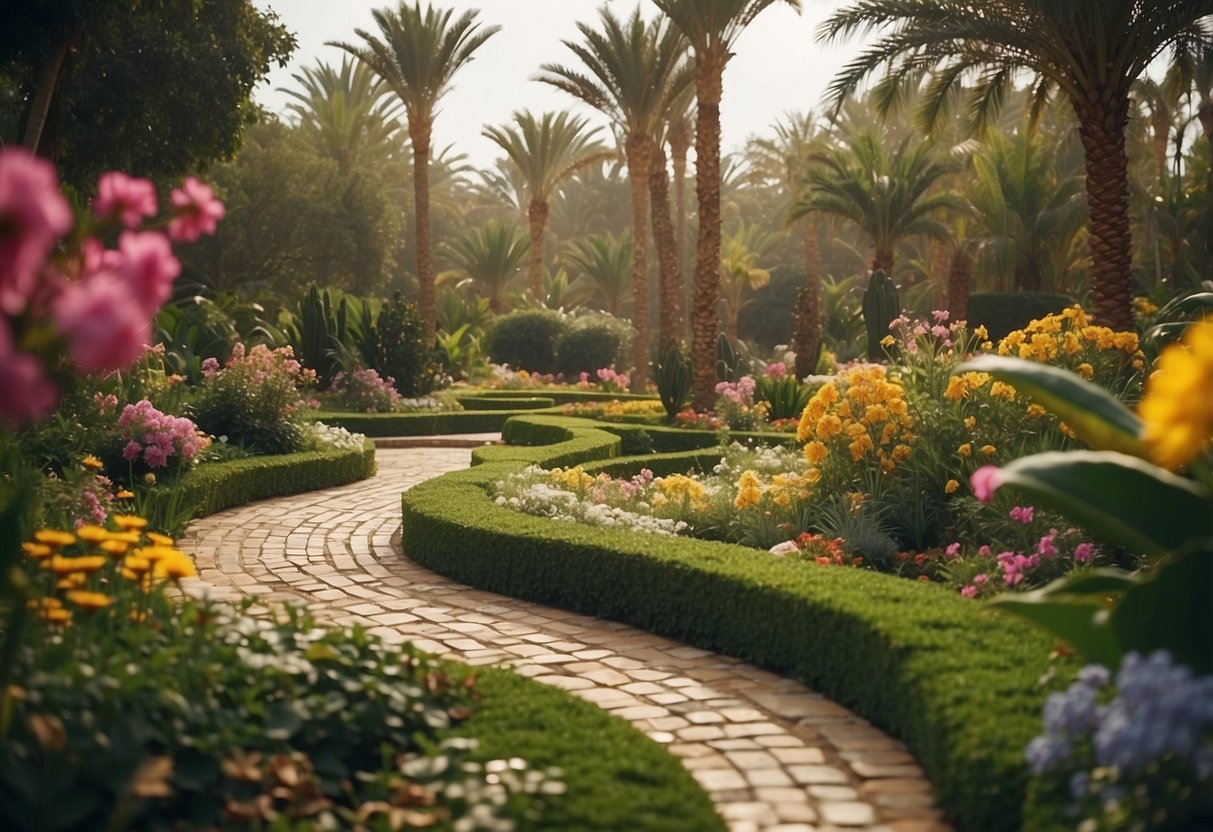
Mosaic pathways can add a touch of color and artistry to your Egyptian garden. You can use pebbles, tiles, or even broken pieces of pottery to create beautiful patterns.
Mix the mortar or concrete and spread it in small sections. Press the materials into the mix following your design. Keep the mortar damp for a few days to ensure it dries strong.
These pathways not only enhance the look of your garden but also provide a sturdy walkway. You can get creative with designs like spirals or natural patterns. This will add charm and character to your outdoor space. For more ideas, visit mosaic walkway designs.
Creating an Authentic Egyptian Garden

Creating an authentic Egyptian garden involves understanding the historical context, choosing native Egyptian plants, and incorporating traditional water features. These elements help capture the essence of ancient Egyptian landscaping.
Understanding the Historical Context
Egyptian gardens date back thousands of years, serving both practical and aesthetic purposes. They were often found in wealthy households and temples. Water was the lifeline of these gardens, brought through irrigation channels. Gardens provided food, medicine, and beauty.
Designs included symmetry and order. Paths and areas for relaxation were central. Walls or fences often surrounded these gardens to protect from the desert wind. This historical background informs the choices you make when designing your garden.
Choosing Native Egyptian Plants
Selecting the right plants is key to creating an authentic Egyptian garden. Native plants included fruit-bearing trees like date palms, figs, and pomegranates. Vegetables such as lettuce, onions, and leeks were common. Flowers like lotus and papyrus added beauty and signified life and regeneration.
Plant these in a way that mimics ancient garden layouts. Group them efficiently for easy access and maintenance. Consider modern varieties that thrive in similar climates to ensure success. Use native Egyptian plants to root your garden in historical authenticity.
Incorporating Water Features
Water features were a staple in Egyptian gardens, crucial for both practical and aesthetic reasons. Rectangular ponds filled with fish and ducks were popular. These ponds, often lined with fruit trees, provided food and cooled the air. They also served as focal points in garden design.
Set up irrigation channels to mimic ancient techniques. This can help water your plants efficiently. You could also include a small fountain or stream for added authenticity. Using water wisely creates a serene and functional space that honors the ingenuity of ancient Egyptian gardening.
Design Principles in Egyptian Gardens

Egyptian gardens are known for their layout, which combines symmetry, geometric patterns, practical pathways, and structures for shade. These elements not only add beauty but also functionality to the garden.
Symmetry and Geometry
Egyptian gardens often exhibit strong symmetry and geometric precision. This approach creates a sense of order and balance. You might see paths, ponds, and planting beds arranged in perfect lines and shapes.
Geometry plays a crucial role, with rectangular ponds and neatly organized rows of plants common. The influence of symmetry can be seen in the balanced, mirror-like designs that define these spaces. Creating such balanced visuals enhances the overall peacefulness and harmony in the garden.
Use of Pathways and Walkways
Pathways and walkways guide movement through the garden and create distinct zones. In ancient Egypt, paths often followed geometric patterns, acting as a framework for the entire garden layout.
Stone or compacted earth can be used for modern interpretations, providing structure while being functional. These pathways sometimes led to focal points like water features or seating areas. Paved pathways with stones might also be bordered by luscious greenery, enhancing the visual appeal without compromising utility.
Incorporating Shade Structures
Shade was essential in Egyptian gardens due to the hot climate. Structures like pergolas, trellises, and covered seating areas were common. These not only provided relief from the sun but also added vertical interest to the garden design.
You can use wooden or metal pergolas adorned with climbing plants to create a similar effect. Incorporating fruit-bearing trees or vines provides natural shade and adds to the garden’s lush, green ambiance. Shade structures play a dual role of functionality, offering comfort, and decor, enhancing the aesthetic appeal.







